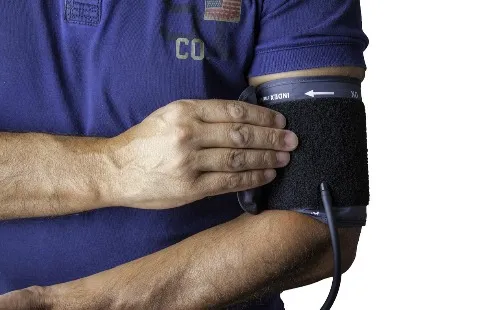
New to Germany? Avoid These Common Health Insurance Mistakes
Section: Health Insurance
There is "some uncertainty" in the interpretation of vaccination rate data, according to the Robert Koch Institute (RKI). Several considerations suggested that the reports in the so-called Digital Immunization Rate Monitoring (DIM) probably underestimate the vaccination rates, according to an RKI report released Tuesday. Especially among young adults and middle-aged adults, more people may have already received a first Corona vaccination than officially recorded, according to the report.
The DIM is fed by reports from vaccination centers, hospitals, mobile vaccination teams and now also occupational physicians; according to the RKI, it also includes data from physicians in private practice and private physicians. Together, they form the basis for the so-called vaccination dashboard.
As the vaccination dashboard shows, 55.1 percent of the total population in Germany is fully vaccinated. That is 45,842,065 million people. Accordingly, 52,010,167 million people have been vaccinated at least once. That makes 62.5 percent of the total population.
In addition to these figures, there is another RKI survey called Covimo, for which vaccination rates are extrapolated based on surveys.
According to the RKI website, "The aim of the Covid-19 vaccination monitoring is to record the willingness and acceptance of different population groups in Germany to be vaccinated and to identify potential barriers to vaccination uptake in a timely manner." For this purpose, approximately 1000 people aged 18 and older in Germany have been surveyed by telephone every three to four weeks since January 2021.
In the most recent Covimo cross-sectional survey from late June to mid-July, a discrepancy with the DIM emerged, according to the report. The rate of those vaccinated at least once turned out to be "quite a bit higher," especially in the 18- to 59-year-old age group.
While 79 percent reported being vaccinated in the survey, 59 percent were at the time of the survey, according to the reporting system. The report's authors write that the actual vaccination rate is likely to be between the two sources' figures.
"In contrast, there was no significant difference in vaccination rates to fully vaccinated," the report states. Some underreporting in such surveillance systems is also considered expected by experts.
Several explanations are given. One point is the recording of Johnson & Johnson immunizations, where only one dose is provided for full protection. Contracted physicians reported these immunizations exclusively as second doses of vaccination; moreover, no assignment of vaccine and age group was possible, the RKI explains. Meanwhile, the DIM data include a note that the vaccination rates of adults vaccinated at least once by age group are "systematically underreported."
The report also says that so far, only about half of the occupational physicians registered with the reporting system reported vaccinations through the web application. "This could be an indication of underreporting of vaccination rates by DIM."
The RKI experts discuss other conceivable influencing factors: such as potential biases in the survey that could lead to an overestimation of the rate. For example, they say, it can be assumed that people who support vaccinations are more likely to participate than those who refuse. Also, people without sufficient knowledge of German would not have been able to participate in the interviews. For both aspects, however, the authors point out that there should then also have been a greater deviation between the sources among those who were fully vaccinated.The report on the survey states that 91.6 percent were vaccine-ready or already vaccinated, according to the report. "Covid 19 vaccine readiness in the general population is at a high level."
Photo by Mufid Majnun

Section: Health Insurance

Section: Health

Section: News

Section: Arts

Section: Arts

Section: Politics

Section: Politics

Section: News

Section: Politics

Section: Health Insurance
Health Insurance in Germany is compulsory and sometimes complicated, not to mention expensive. As an expat, you are required to navigate this landscape within weeks of arriving, so check our FAQ on PKV. For our guide on resources and access to agents who can give you a competitive quote, try our PKV Cost comparison tool.
Germany is famous for its medical expertise and extensive number of hospitals and clinics. See this comprehensive directory of hospitals and clinics across the country, complete with links to their websites, addresses, contact info, and specializations/services.
Offene Wunde is a documentary theater piece about the attack at the Olympia Einkaufszentrum (OEZ) by Tunay Önder and Christine Umpfenbach. On July 22, 2016, a perpetrator motivated by racism killed nine young people from Munich: Armela, Can, Dijamant, Guiliano, Hüseyin, Roberto, Sabine, Selçuk,...



No comments yet. Be the first to comment!